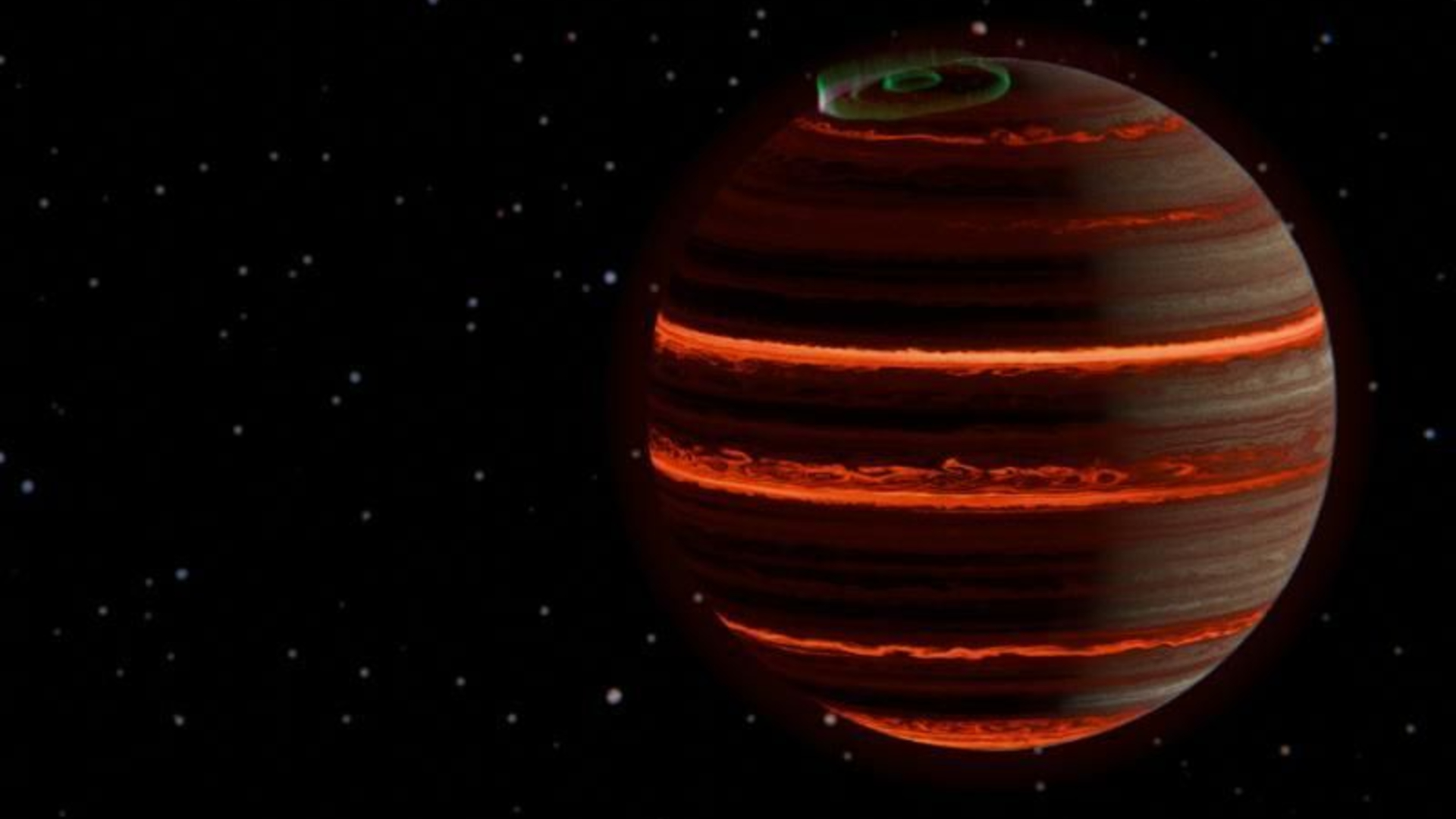Watch the Perseverance rover land on Mars in this epic first-of-its-kind video
Humanity has never seen anything like this before.
NASA just released amazing, high-definition video that its car-sized Perseverance rover captured during its epic landing inside Mars' Jezero Crater on Thursday (Feb. 18).
The unprecedented footage takes viewers along for Perseverance's harrowing ride, even showing the moment the rover, still attached via cables to its "sky crane" descent stage, hit the red dirt on Jezero's floor.
“For those who wonder how you land on Mars, or why it is so difficult, or how cool it would be to do so — you need look no further," acting NASA Administrator Steve Jurczyk said in a statement today (Feb. 22), when the entry, descent and landing (EDL) footage was unveiled.
"Perseverance is just getting started and already has provided some of the most iconic visuals in space exploration history," Jurczyk added. "It reinforces the remarkable level of engineering and precision that is required to build and fly a vehicle to the Red Planet."
Perseverance's EDL camera system also features a microphone, which the team had hoped would capture rushing Martian winds and other EDL sounds. That didn't happen, but the mic did switch on after touchdown, recording the first-ever true audio on the surface of Mars.
Touchdown! NASA's Perseverance rover lands on Mars
Live updates: NASA's Perseverance Mars rover mission
Breaking space news, the latest updates on rocket launches, skywatching events and more!


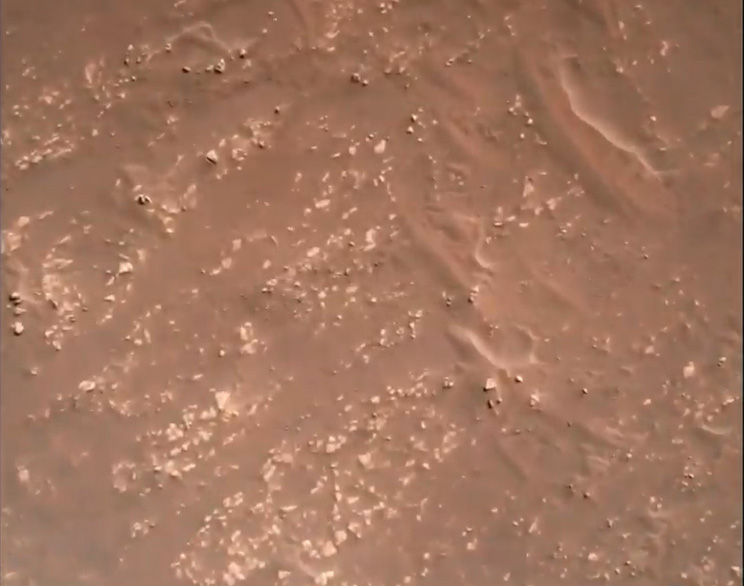

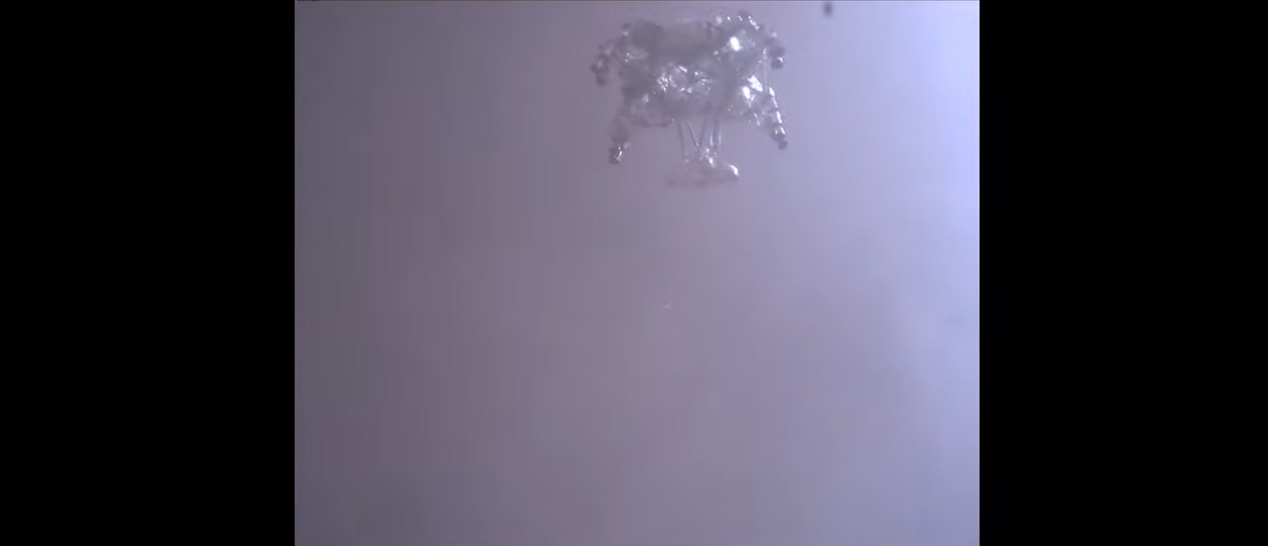
Book of Mars: $22.99 at Magazines Direct
Within 148 pages, explore the mysteries of Mars. With the latest generation of rovers, landers and orbiters heading to the Red Planet, we're discovering even more of this world's secrets than ever before. Find out about its landscape and formation, discover the truth about water on Mars and the search for life, and explore the possibility that the fourth rock from the sun may one day be our next home.
Documenting the 'seven minutes of terror'
Perseverance isn't the first robot to document its arrival on Mars. The six-wheeled robot's predecessor, NASA's Curiosity rover, captured imagery of its own "seven minutes of terror" touchdown in August 2012. (It takes NASA spacecraft about seven minutes to reach the surface after hitting the top of the Martian atmosphere, and the trip down is hazardous in multiple ways, hence the name.)
Curiosity employed the same basic landing strategy as Perseverance, relying on a supersonic parachute and a rocket-powered sky crane, among other tech, to get down safely. But the earlier rover's EDL footage was not nearly as sharp or complete as the one NASA unveiled today.
We got to see Curiosity's heat shield fall away, for example, but the imagery stopped long before the rover touched down. And we didn't get the range of viewpoints that the Perseverance video provides. The newer mission put multiple EDL cameras on the rover's protective backshell, one on the bottom of the sky crane and two on Perseverance itself — one that looked up and another that looked down.
Join our forums here to discuss the Perseverance rover on Mars. What do you hope it finds?
These videos and these images are the stuff of our dreams.
Al Chen, EDL lead at JPL
Together, these cameras captured more than 23,000 images during Perseverance's Thursday descent, team members said. The team stitched many of the photos together to produce the video, which begins about 230 seconds into the rover's seven minutes of terror.
"These videos and these images are the stuff of our dreams," Perseverance's EDL lead Al Chen, of NASA's Jet Propulsion Laboratory (JPL) in Southern California, said during a news conference today.
Chen said he and his colleagues will pore over the footage for years to come, gleaning insights that will aid future Mars landing efforts. And the video's impact will extend far beyond the engineering and space-science communities, serving to inspire regular folks all over the world, NASA officials said.
"What we've seen here today is really nothing short of amazing," Thomas Zurbuchen, associate administrator for NASA's Science Mission Directorate, said during today's news conference. "That video, I believe, should become mandatory viewing for young people who not only want to explore other worlds and build spacecraft to take them there but also want to be part of diverse teams achieving all the audacious goals of our future."
The comprehensive EDL imagery also helped scientists quickly pinpoint where Perseverance's accessory pieces touched down. On Friday (Feb. 19), NASA's Mars Reconnaissance Orbiter, which has been circling the Red Planet since 2006, imaged the mission's backshell and connected parachute, its sky crane and heat shield and the rover itself, in their various locations inside Jezero.
A pioneering mission
Perseverance is the centerpiece of NASA's $2.7 billion Mars 2020 mission, which is pushing the boundaries of exploration in multiple ways. The six-wheeled rover will hunt for signs of ancient organisms on the floor of Jezero, which harbored a lake and a river delta billions of years ago. No robot has searched for life on the Martian surface since NASA's twin Viking landers ceased operations in the early 1980s.
Mars 2020 also kicks off the first-ever Mars sample-return effort. Perseverance will collect and cache dozens of samples with especially high astrobiological potential, which a joint NASA-European Space Agency campaign will haul to Earth as early as 2031.
Perseverance's mission includes several groundbreaking technology demonstrations as well. For example, a tiny helicopter named Ingenuity flew to Mars on the rover's belly. In the coming weeks, the 4-lb. (1.8 kilograms) craft will deploy and take to the skies, attempting to become the first rotorcraft ever to fly on a world beyond Earth.
Another tech demo, called MOXIE (short for "Mars Oxygen In-Situ Resource Utilization Experiment"), is designed to generate oxygen from the thin Martian atmosphere, which is 95% carbon dioxide by volume. If MOXIE works as planned, its scaled-up descendants could help astronauts get a foothold on the Red Planet, NASA officials have said.
Sights and sounds
Then there are the microphones. Perseverance totes two — the EDL mic and another in its rock-zapping SuperCam instrument.
Taking microphones to Mars isn't new; NASA's Mars Polar Lander spacecraft sported a mic, and the agency's Phoenix lander had one built into its descent camera. But neither of those instruments returned any Martian sounds. Mars Polar Lander crashed during its touchdown attempt in December 1999, and Phoenix's mic was never turned on out of concern that its use could interfere with the spacecraft's landing. (Phoenix touched down safely in May 2008 and enjoyed a successful surface mission.)
But we now have our first-ever true Martian audio, courtesy of Perseverance's EDL mic. The commercial, off-the-shelf microphone recorded about 60 seconds of sound on Saturday (Feb. 20), including a subtle Martian breeze and some whirs coming from Perseverance, NASA officials said.
"Really neat — overwhelming, if you will," Perseverance EDL camera lead Dave Gruel, also of JPL, said during today's news conference, just after playing a snippet of the historic Martian sound.
The team is still working to determine why the microphone didn't work as planned during EDL, Gruel said. But initial analyses suggest there may have been some sort of communications issue involving the mic's "digitizer puck," which allows the instrument to link up with Perseverance's onboard computer.
"We're not exactly sure why it happened," Gruel said. "It could have been the fact that there was just so much data streaming into the system."
But the microphone is working now, and Gruel and his colleagues plan to keep gathering audio for as long as it lasts on the harsh, frigid Martian surface. Perseverance may even be able to gather stereo sound at some point, operating the EDL and SuperCam mics in concert, team members have said.
Sounds of Mars: Perseverance will put ears on the Red Planet for 1st time
Perseverance getting up to speed
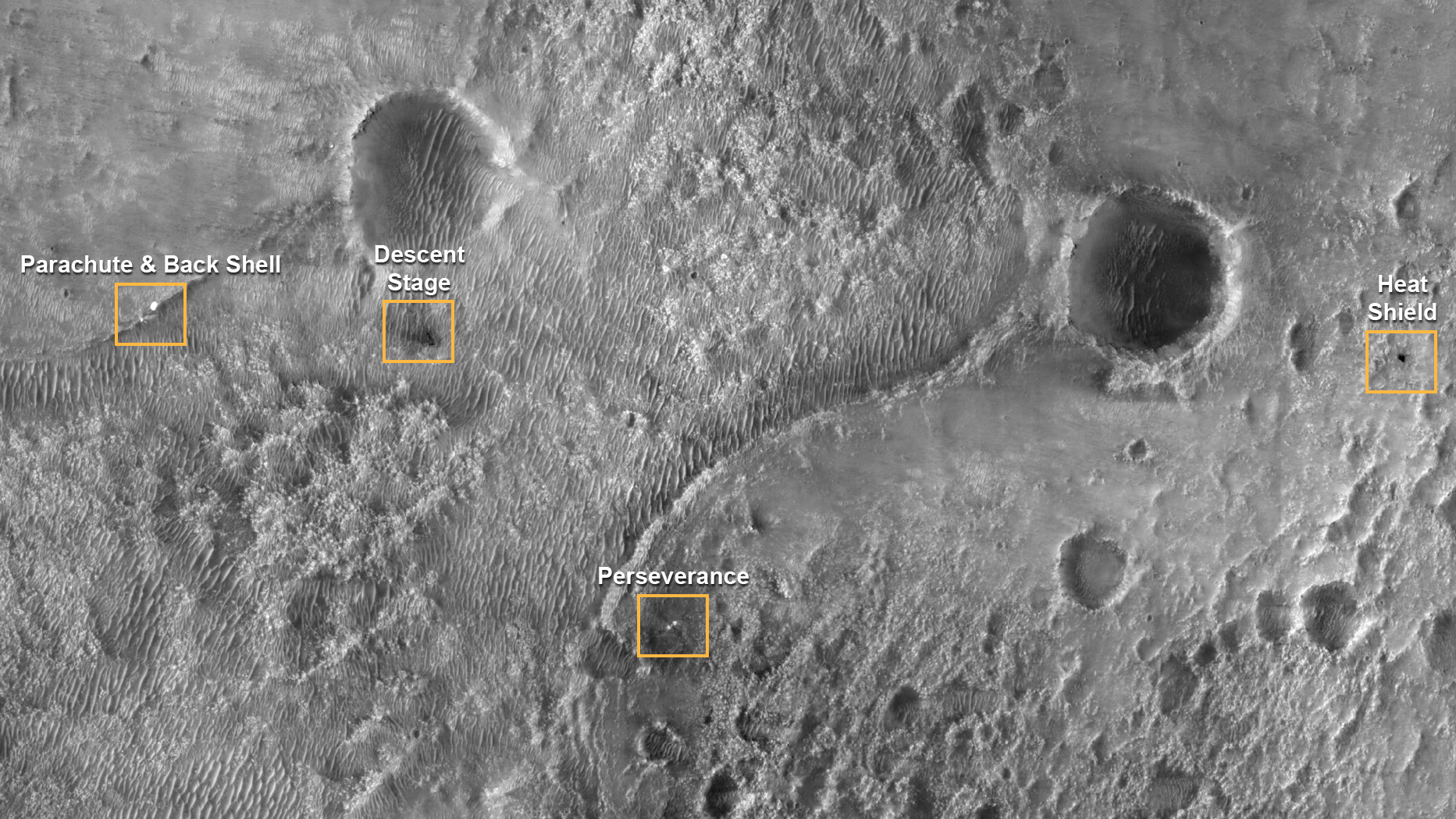
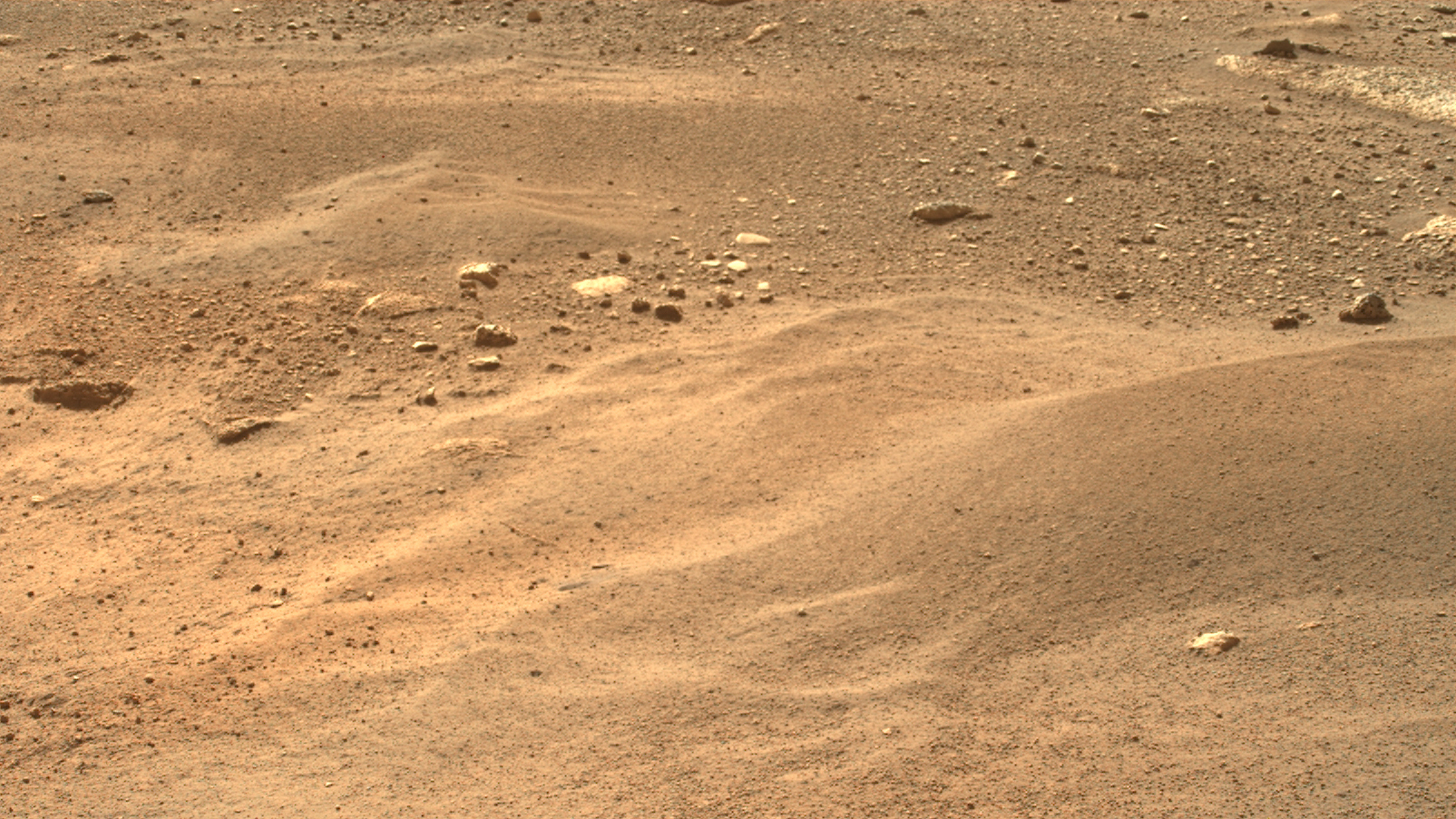

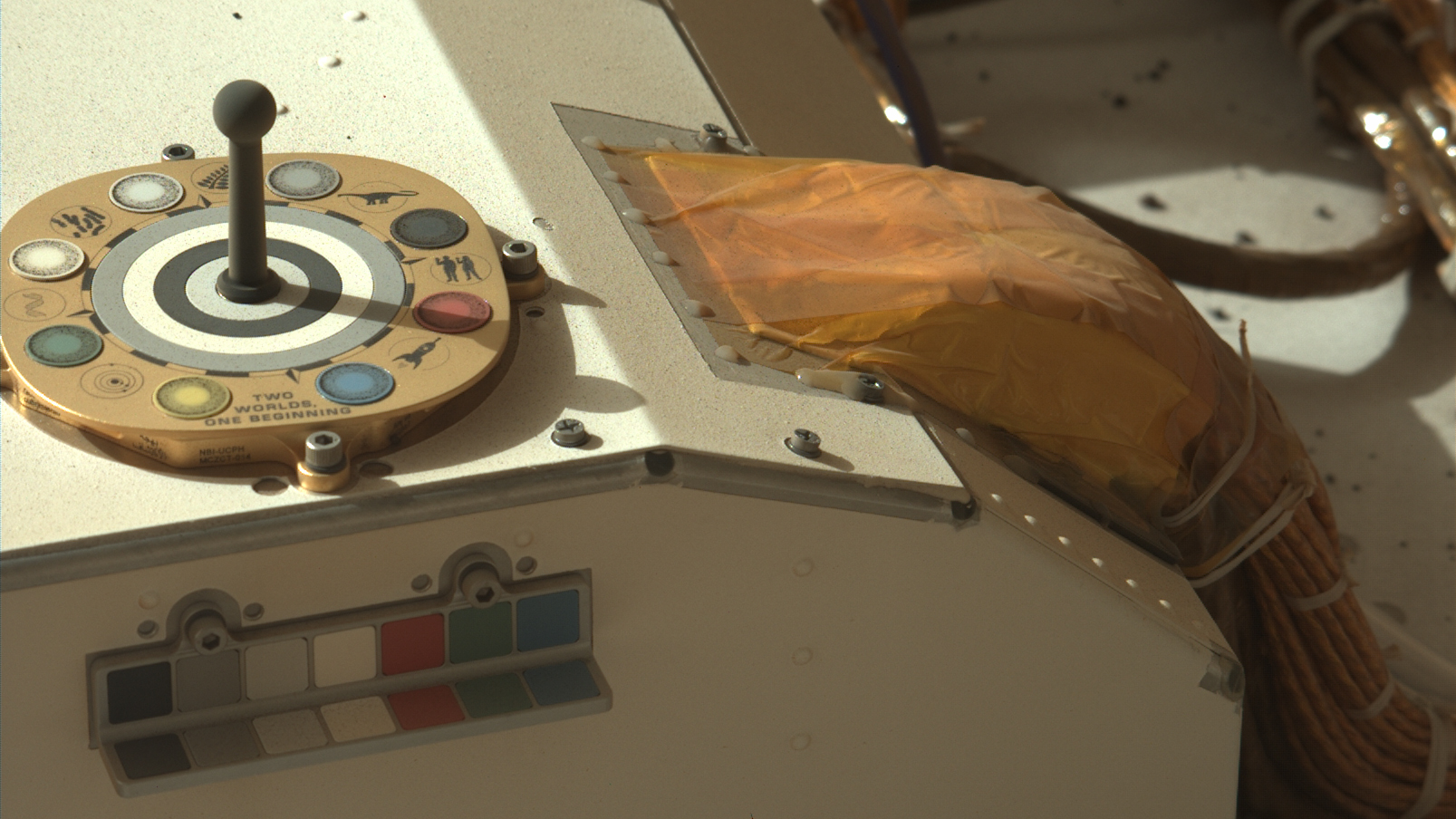
Perseverance is not yet ready to start its science work in earnest; the Mars 2020 team is still in the process of checking out the rover's instruments and subsystems. The news so far is very good on this front.
"I am happy to report that Perseverance is healthy," Perseverance surface mission manager Jessica Samuels, also of JPL, which manages the Mars 2020 mission, said during today's news conference.
The team has already executed 5,000 rover commands on the surface, Samuels added, and everything has "come back exactly how we've been wanting it to with respect to our health checkouts and our instrument checkouts."
The nuclear-powered Perseverance has already deployed its headlike mast and captured its first photo with its high-powered MastCam-Z imaging system. The rover has also captured many other images of its surroundings with its hazard-avoidance and navigation cameras, mission team members said.
Over the coming days, Perseverance will straighten out its wheels, deploy its robotic arm and perform its first drive, Samuels said. And the team will continue prepping for the first big mission milestone on the surface — getting Ingenuity into the skies.
Those demonstration flights will likely occur this spring, allowing Perseverance to start its science and sampling work in earnest this summer, mission team members have said.
There should be plenty of time to get everything done. Mars 2020's prime mission lasts for one Mars year, or about 687 Earth days. And the rover may keep driving far into the future; Curiosity, after all, is still going strong today.
This story was updated at 9:15 p.m. EST on Feb. 23 to state that Perseverance's recording is the first true audio ever collected on Mars. The original version stated that it was the first true audio ever recorded on a planet beyond Earth. That's not the case; the Soviet Union's Venera 13 and Venera 14 probes recorded audio on Venus in 1982.
Mike Wall is the author of "Out There" (Grand Central Publishing, 2018; illustrated by Karl Tate), a book about the search for alien life. Follow him on Twitter @michaeldwall. Follow us on Twitter @Spacedotcom or Facebook.
Join our forums here to discuss the Perseverance rover on Mars. What do you hope finds?
Join our Space Forums to keep talking space on the latest missions, night sky and more! And if you have a news tip, correction or comment, let us know at: community@space.com.

Michael Wall is a Senior Space Writer with Space.com and joined the team in 2010. He primarily covers exoplanets, spaceflight and military space, but has been known to dabble in the space art beat. His book about the search for alien life, "Out There," was published on Nov. 13, 2018. Before becoming a science writer, Michael worked as a herpetologist and wildlife biologist. He has a Ph.D. in evolutionary biology from the University of Sydney, Australia, a bachelor's degree from the University of Arizona, and a graduate certificate in science writing from the University of California, Santa Cruz. To find out what his latest project is, you can follow Michael on Twitter.

